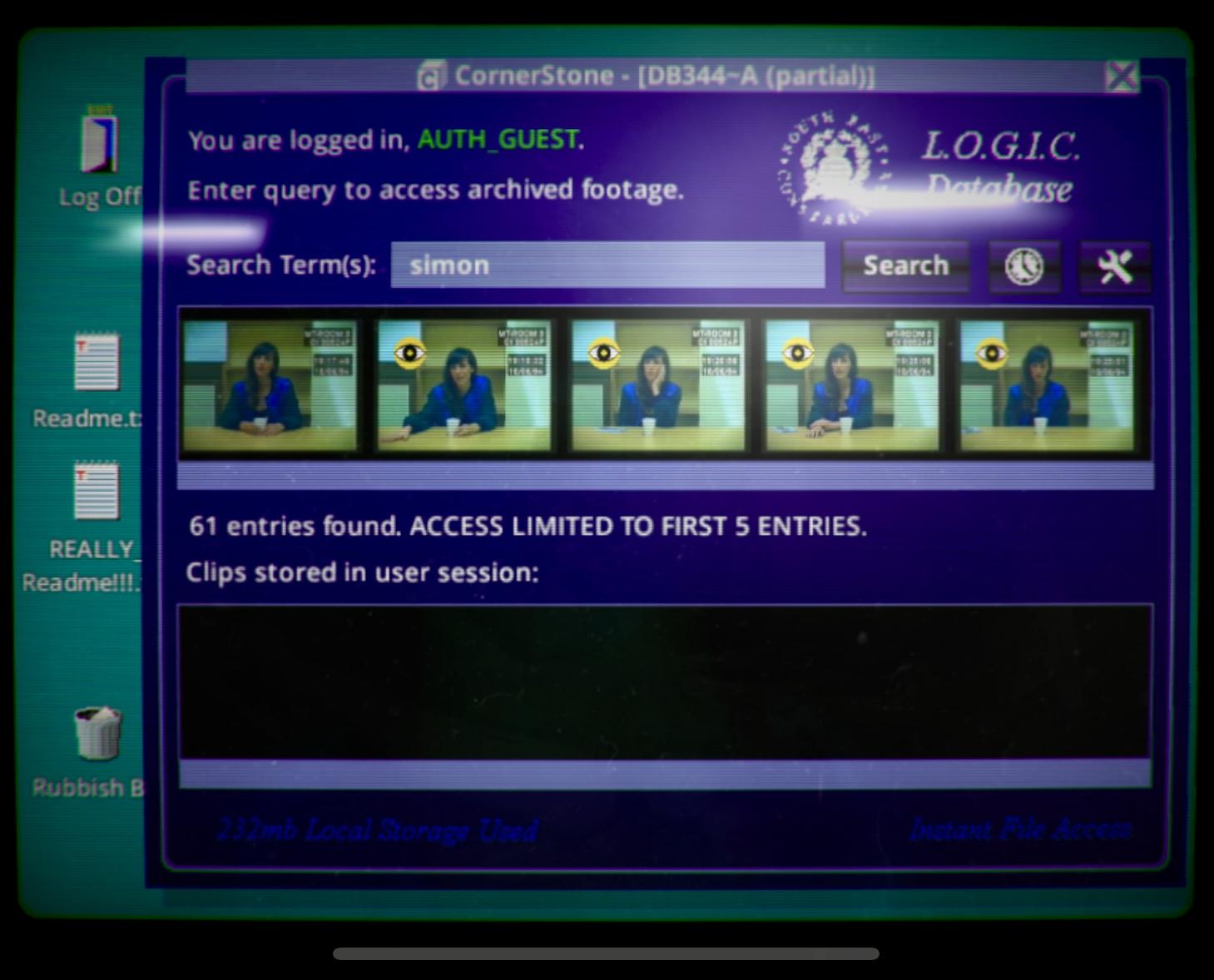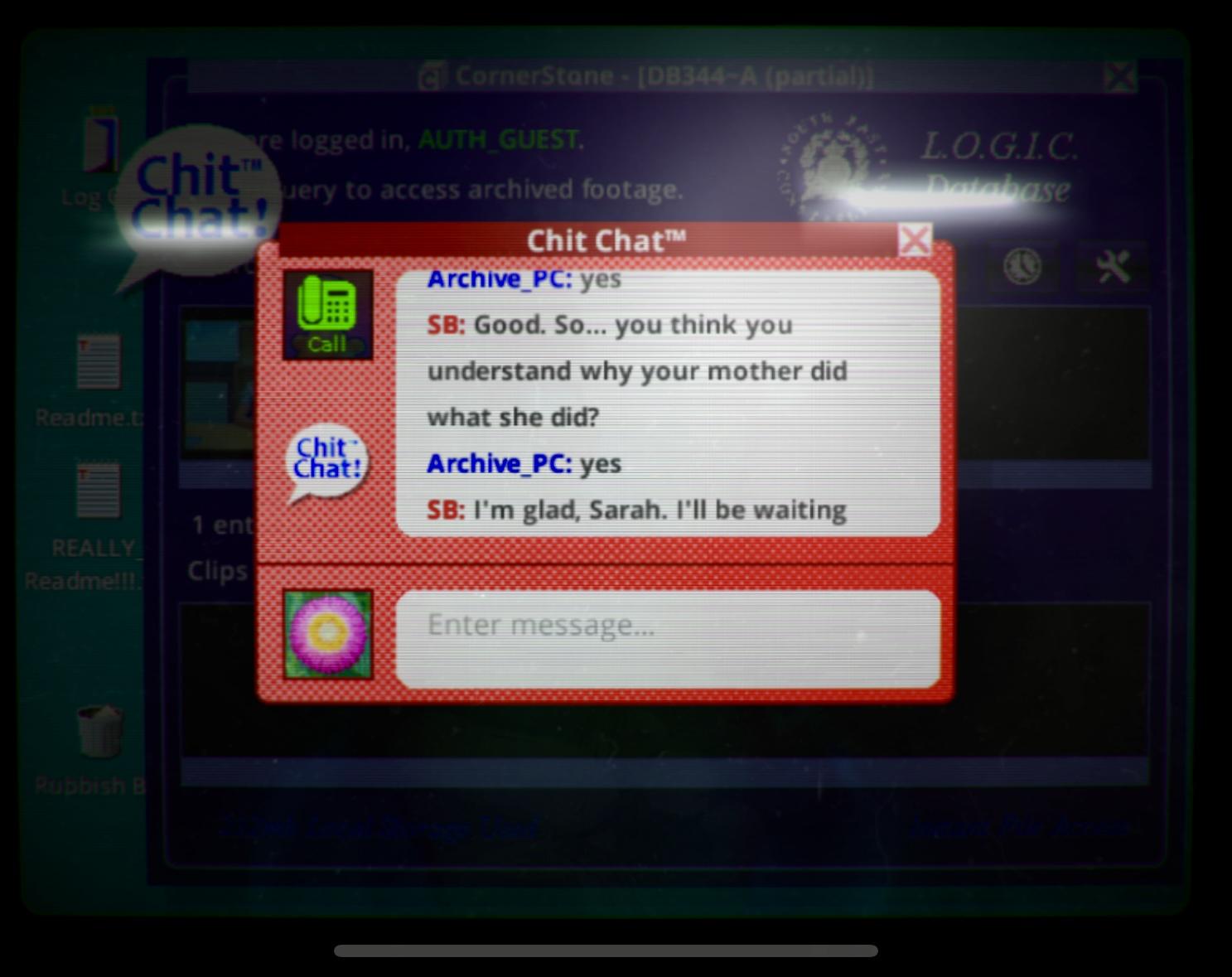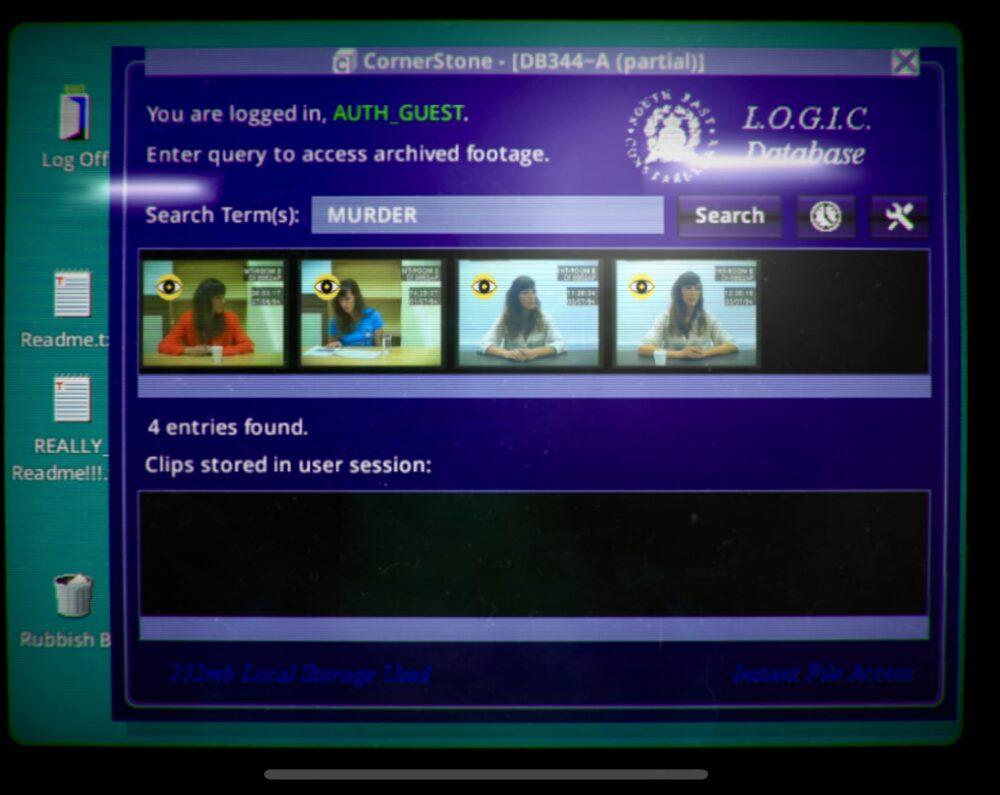Her Story was released in 2015 by Sam Barlow. It is available to play on mobile and PC devices, and I played on my iPhone for this critical play. This game deals with heavier topics involving violent and sexual themes, so it is intended for a more mature audience. In Her Story, the player navigates an old computer and watches archives of spliced investigation interviews with a woman whose husband was murdered. The videos have all been transcribed and the player searches for videos using keywords in the search bar. Through this mechanic, Her Story puts the initiative on the player to uncover the narrative. It is up to them to pick out which parts of the story they want to explore and dive deeper into.

The mechanic of the game restricts players from uncovering the chronological narrative all at once. Since the computer the player is using in game is quite old, only the first five videos that match with the searched keyword are visible. Then, there is the mechanic where players must think of keywords on their own and manually type them in order to discover new videos. These mechanics lead to dynamics where the player is tasked to look for what could be potential keywords in interview videos. At the start state of the game, the word “murder” is already entered and four videos, each recorded at a different time, reveal the murder mystery premise of the game. At first, the keywords I looked up were quite general and were words I would associate with a murder, such as “Simon” (the name of the victim) and “dead.” However, as I watched more videos and uncovered more clues, the keywords I entered became more specific to the story, such as “Rapunzel” and “mirror.” These more specific searches uncovered videos that contained important plot points and plot twists. Through this structure, where important narrative components can only be discovered by searching for specific and niche keywords, the player must play an active role in the game. The narrative does not come passively, it must be sought out by the player.

The narrative is also composed of several arcs. Again, at the start of the game, the main question the game presents to the player is whether or not the woman in the video murdered her husband. However, the story is more complex than this. As players explore clips and identify more keywords, they also encounter more mysteries. For example, when I discovered that the interviews were actually of two identical twins, and that one of them did kill the husband, the mystery did not end there. Even though the initial question was answered, so many more questions popped up, such as the motivation behind the murder, the relationship between the twins, and each twin’s relationship with the victim. Again, it is up to the player to decide if they want to fully explore these stories, or if they are satisfied with their current knowledge. However, it is only by thoroughly exploring the narrative that the biggest mystery can be solved, that being why are you, the player, looking through these files? What is your role in this murder case?
I will admit that I stopped playing the game before reaching the end condition, because I thought that I fully understood the narrative. Only after doing some quick Wikipedia research did I realize that I did not uncover all of the plot points, such as the midwife’s role in the twin’s separation or the collaboration between the twins to hide the body. I went back to the game and reached the end condition still without uncovering all of the details. To ensure that the player has a better grasp of the narrative before they stop playing, it might be helpful to move the end condition later, after more clips are watched. I personally no longer felt motivated to search for the remaining clips after I reached the end, even though I knew that I did not get the full picture. It might also be helpful if the player received a message with hints of keywords to look up if they have been playing the game for a while. That way, players still have the agency to explore the narrative, with the assurance that they are not missing anything important.




